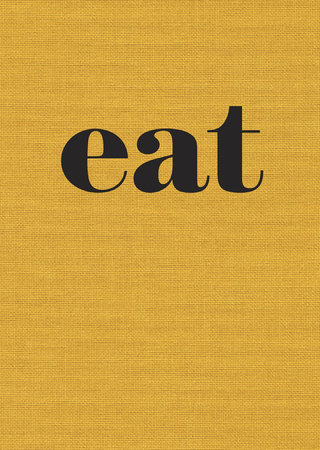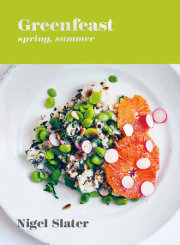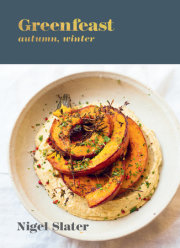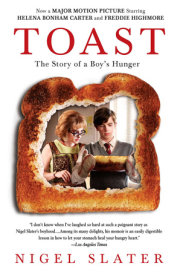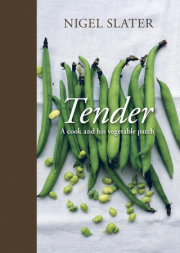Introduction
Sometimes we cook purely for the pleasure of it, understanding the provenance of our ingredients, choosing them with great care, thoughtfully taking them on the journey from shop to plate. We seek out the perfect recipe and take our time, lovingly preparing our dinner from scratch. There are times when we might want to take the whole business even more seriously, meeting those who produced it or, if we have the space, growing some of it for ourselves. We want to consider it, discuss it, perhaps even write about it and photograph it.
But sometimes, we just want to eat.
This little book is for those times. The days when we have barely an hour to cook. The times we just want something delicious on a plate at the end of our working day. Yes, we can phone for a pizza or for Chinese or Indian takeout. We can drop by that Vietnamese place on the way home or pick up a ready-made microwavable delight from the supermarket. But as much as I enjoy the odd takeout meal, I have always found dinner is more life enhancing when I have done more than open a box or pick up the phone. There is much pleasure in making dinner at home when we have cooked something, however quickly, for ourselves or for someone else. That is why I have written this book and why its subtitle is
The Little Book of Fast Food. A collection of recipes, most of which you can have on the table in less than an hour.
By “fast” I do not mean thoughtless or careless. There is great joy to be had in a perfectly cooked steak, its fat crisping lightly on the grill; a single fillet of spanking-fresh fish singing to itself, quietly, in butter; a baked potato whose flesh has been mashed and freckled with rust-red, fat-peppered chorizo. Simple things, done well. Go up a notch and there is a thin, gold-and-white frittata of goat cheese; a light chicken rag. with thyme and green onion; or a broth made with pork ribs and dark stars of anise. Even at its most complex, a Thai vegetable curry is made in minutes once you have pureed the lemongrass, ginger, chiles, garlic, and cilantro to a yellow-green paste in the food processor. Making yourself and others something good to eat can be so little trouble and so much pleasure. And much more satisfying than coming home to a meal in a box.
This book
Twenty-one years ago, I wrote my first book,
Real Fast Food, a collection of ideas and recipes for something to eat that you could get on the table within half an hour or so. Still in print, it is a book of which I am very fond and I wish it well, but looking at those 350 or so recipes twenty years on, I realize how much our everyday eating has changed. How once unusual ingredients are now accessible in every supermarket; how our recipes are more adventurous; the way fresh ingredients are now essential and once frowned-upon shortcuts are now used without apology.
Real Fast Food is still relevant, but our eating has moved on. What seemed new and interesting two decades ago is now everyday. The speeded-up variations of well-known classics still stand, but there are several recipes that now seem somewhat naive, others that are no longer to my taste (we move on), and, if truth be told, there are one or two that should probably never have been there in the first place.
Although I am far from the most prolific of writers, I have written ten or so books since then, including one or two he Ty tomes. For some time now I have wanted to return to the subject of fast food, to update that dear little book and bring it in line with modern eating. That is what you have in your hands. A little book of straightforward, contemporary recipes, quick or particularly easy to get to the table. A collection of recipes that are fast, simple, and, I hope, fun.
The recipes
I have every respect for the time-honored recipe. Those faultless blueprints whose every detail must be adhered to. I appreciate the classic dishes and prefer them to be carried out in their original style rather than tweaked and reinvented. That said, I have no wish to eat as if the clocks have stopped; life is too short to attempt perfection every day and to be inhibited by someone else’s set of rules. Cooking should, surely, be a lighthearted, spirited affair, alive with invention, experimentation, appetite, and a sense of adventure.
The recipes here are straightforward and within the grasp of most of us. I would like to think that many of them will work for those who have never cooked anything in their lives. It is not a book of detailed, pedantic, obsessively honed directions. Written in a short style, they are, I hope, both practical and inspirational. Opposite many of the recipes are ideas that have bounced off them, a scattering of notes, suggestions, and narrative recipes that might also interest you. Think of them as little extras.
The recipes are generally for two, but they are easy enough to double up. The stumbling blocks of increasing the quantities of ingredients such as gelatin and yeast have no place in this book. Most of the ingredients are fresh, but I have taken a few shortcuts, such as using canned beans rather than the dried sort that need soaking and long cooking; the occasional sheet of frozen puff pastry; a tub of decent mayonnaise, and even, on a couple of occasions, the ready-made b.chamel sauce that you can get in aseptic package from some groceries and delis. These are shortcuts I find useful for everyday cooking.
The form of the recipes is new. Written in the style of an extended tweet, they are no dogged “1-2-3” sets of instructions. The ingredients lists are next to a picture of the finished dish, both at the top of the method so you can see, at a glance, what you will need and then, in more detail, within the method. It is simple enough to get used to.
Some of the ideas in this book are updated recipes from
Real Fast Food, others are from my “Midweek Dinners” column in the Sunday
Observer magazine, and others still started life as tweets to my Twitter followers. Others still have been developed especially for the book by me and James Thompson over the last couple of years. Working in my kitchen at home, we have tested every recipe at least twice and cooked them for photography. They are not all thirty-minute wonders. A few are special-occasion dinners for when you have friends over, and some require minimal preparation but take a full hour or more of unattended cooking in the oven, but the bulk are neat little dinners you can have on the table in half an hour or so and probably even quicker when you have made them once or twice.
We are not chasing perfection here. This is simply a collection of suggestions for something you might like to make for dinner. Just straightforward, delicious cooking. For the times we just want to eat.
Nigel Slater
London, September 2013
Copyright © 2014 by Nigel Slater. All rights reserved. No part of this excerpt may be reproduced or reprinted without permission in writing from the publisher.





